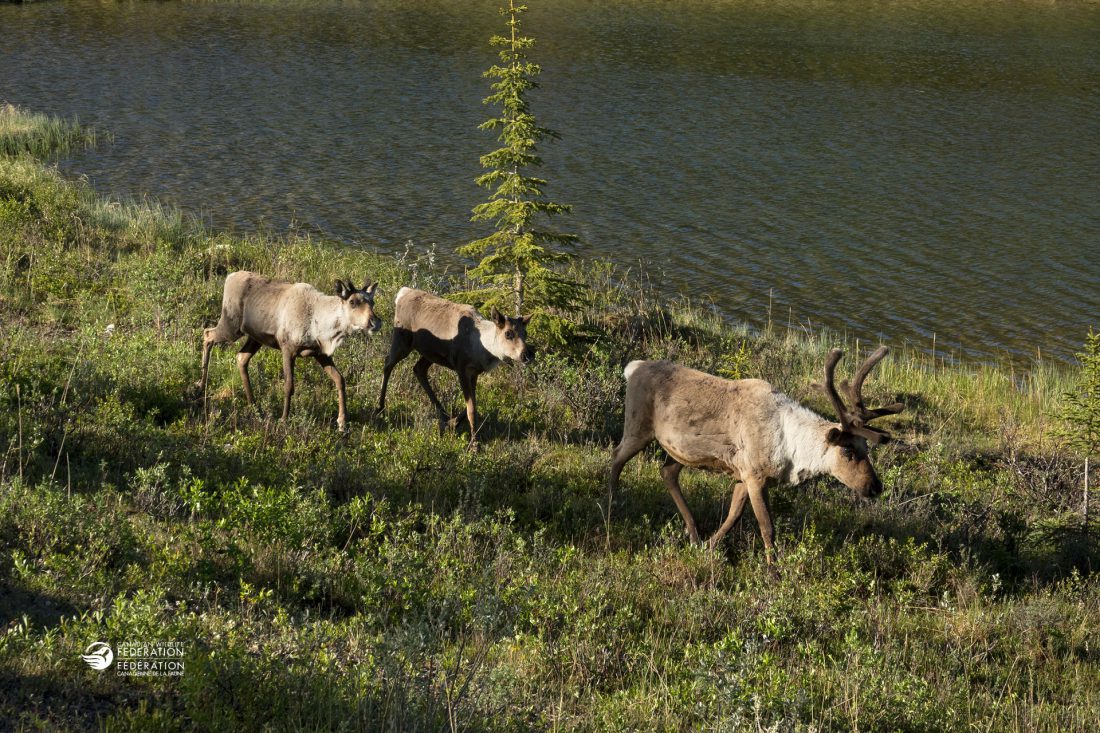Background
Known as one of the largest ecosystems on the planet, the boreal forest wraps around the Northern Hemisphere and covers approximately 33 per cent of earth’s forested area. Nearly one-third of the global boreal forest zone resides within Canada and it extends from Newfoundland and Labrador to the Yukon and northern British Columbia.
While the ecosystem is celebrated for its trees, it also includes thousands of lakes, rivers, wetlands, peat bogs, and many treeless areas such as mountains and coastal plains. The landscape within the boreal forest zone supports about two-thirds of Canada’s known species. This ecosystem also has global environmental benefits as it helps to purify air and water, store carbon and regulate the climate. Therefore, managing and maintaining a healthy, intact and functioning boreal forest across Canada is not only essential to Canadians, but to the world.


Pillar to Canada’s Economy
Canada’s boreal forest is also a pillar of strength to the national economy. From the creation of jobs to tourism and recreation, Canadians have long benefited from a healthy boreal forest. The boreal is considered home to more than 2.5 million Canadians. This includes over 600 Indigenous communities whose traditional territories are deeply-rooted within the boreal.
There are many natural resources within the boreal forest. The production of timber and non-timber products, sites for mineral extraction, oil and gas extraction and hydropower generation have all contributed to the local and national economy. Regrettably, the impacts of development and resource extraction activities have threatened the ecological integrity of the boreal forest in Canada, especially along the southern extent.
Integrated Management
It is imperative to manage the boreal forest for the full range of benefits including wildlife, ecological services, societal and economic values. We believe that ecosystem science should be the basis for all decision makers. This includes comprehensive landscape planning, incorporating legally protected areas, using the best available scientific research and continually monitoring the state of our boreal forest.
At the Canadian Wildlife Federation, we’ve integrated landscape-level planning with a focus on how differing levels of legally protected areas impact fish and wildlife populations in the boreal forest. This allows decision makers, industry and wildlife managers to visualize their plans at the landscape level and to assess whether the plans will actually achieve their intended outcomes.

Videos
Spotlight On
Canada’s Peatlands
Peatlands are a fascinating and complex ecosystem made of Sphagnum mosses that play a critical role in conserving biodiversity and regulating the climate. Roughly one-third of global peatlands occur within Canada and are found primarily in the boreal forest. Conserving Canada’s peatland ecosystem is also a natural solution to climate change.
Birds
The size and diversity of Canada’s boreal forest is so incredibly important to birds that nearly half of all species occurring in Canada rely on this ecosystem. Up to 3 billion migrant birds arrive in the spring to use the boreal as nesting and breeding habitat. Protecting at least 50 per cent of the boreal forest is needed to give birds and other boreal dependant species a chance at survival.
Feature Species
Swainson’s Thrush (Catharus ustulatus)
Considered one of the most prominent songsters in the boreal forest, the Swainson’s Thrush is more likely to be heard than seen. Nearly 75 per cent of the North American breeding population of this species depend on Canada’s Boreal Forest to reproduce. Protecting at least 50 per cent of the Boreal Forest will help to keep this common species common.
Wolverine
These elusive creatures were once found across much of Canada, but largely due to human disturbance and habitat loss the Wolverine has altered their home range to largely remote northern reaches of the boreal and alpine areas. The shift in home range and dependence on large intact habitats makes the Wolverine an excellent indicator of ecological integrity.

Did You Know?
25%
Canada's boreal forest represents 25% of the world's last remaining intact forest, leading the world alongside the Amazon.
30%
More than 30% of Canada's boreal has been allocated to some form of current or future development.
3 Billion Birds
Called “The Singing Forest,” the boreal forest is home to at least 3 billion birds a year. Nearly half of all bird species in Canada rely on the boreal.
Indigenous Guardian Programs
Guardianship initiatives are built on an ethic that supports or promotes conservation activities through traditional knowledge and science. These community-based monitoring programs help to conserve Canada’s wildlife and habitats, and by design, promote inter-generational sharing of indigenous knowledge. The Canadian Wildlife Federation strongly supports conservation programs with a principle objective to empower guardians as caretakers of their lands, wildlife, air and more.
In Scope: Woodland (boreal population) Caribou
The fate of woodland caribou in Canada is in a critical state. To date, nearly 75 per cent of Canada’s woodland caribou populations are experiencing unprecedented declines, and the leading cause is directly linked to disturbance and industrial development in the boreal forest. A concerted conservation effort is required to reverse the trend.
Woodland Caribou were listed as Threatened under Canada’s Species at Risk Act in June 2003.
Since June 2003, Environment and Climate Change Canada and other jurisdictional governments have charted a course to recover caribou through a number of published documents including a recovery strategy, action plans, range plans and conservation agreements. The Recovery Strategy (2012) identified a key operating principle that allows for 35 per cent disturbance to occur within each of Canada’s 51 caribou herds range. Deciding how much habitat can be destroyed without compromising caribou survival is the most important decision in the recovery strategy, and dictates how much of the boreal forest will remain intact over the long term.
If 35 per cent of the landscape is allotted for disturbance, maintaining 65 per cent undisturbed habitat at a landscape scale will underpin the success of caribou recovery. Therefore, conserving caribou ultimately depends on the commitment, collaboration and cooperation between all individuals, stakeholder groups, all orders of government, Aboriginal/Indigenous peoples and international agencies to work towards solutions together.
Without a coordinated conservation effort across Canada, disturbance and industrial development will continue to expand throughout the boreal forest and caribou will unfortunately be lost from most parts of the country.

What You Can Do?
Your voice matters. Get engaged in your local land use planning framework. Promote cross-sector planning. Be vocal about what you’d like the future of our boreal forest to look like.
Advocate that at least 50 per cent of the habitat needs to be protected to give plants and animals the best chance of survival. The Boreal Songbird Initiative has advocated for a 50/50 rule. Find out more.
Support Indigenous-led conservation intiatives such as the Indigenous Guardians Program or Indigenous Protected and Conserved Areas.
Make consumer based decisions that promote conservation effectiveness. For example, third-party certification programs such as the Forest Stewardship Council FSC and Sustainable Forestry Initiative SFI certify their products as sustainble because they intend to protect areas of significant environmental or cultural importance.






